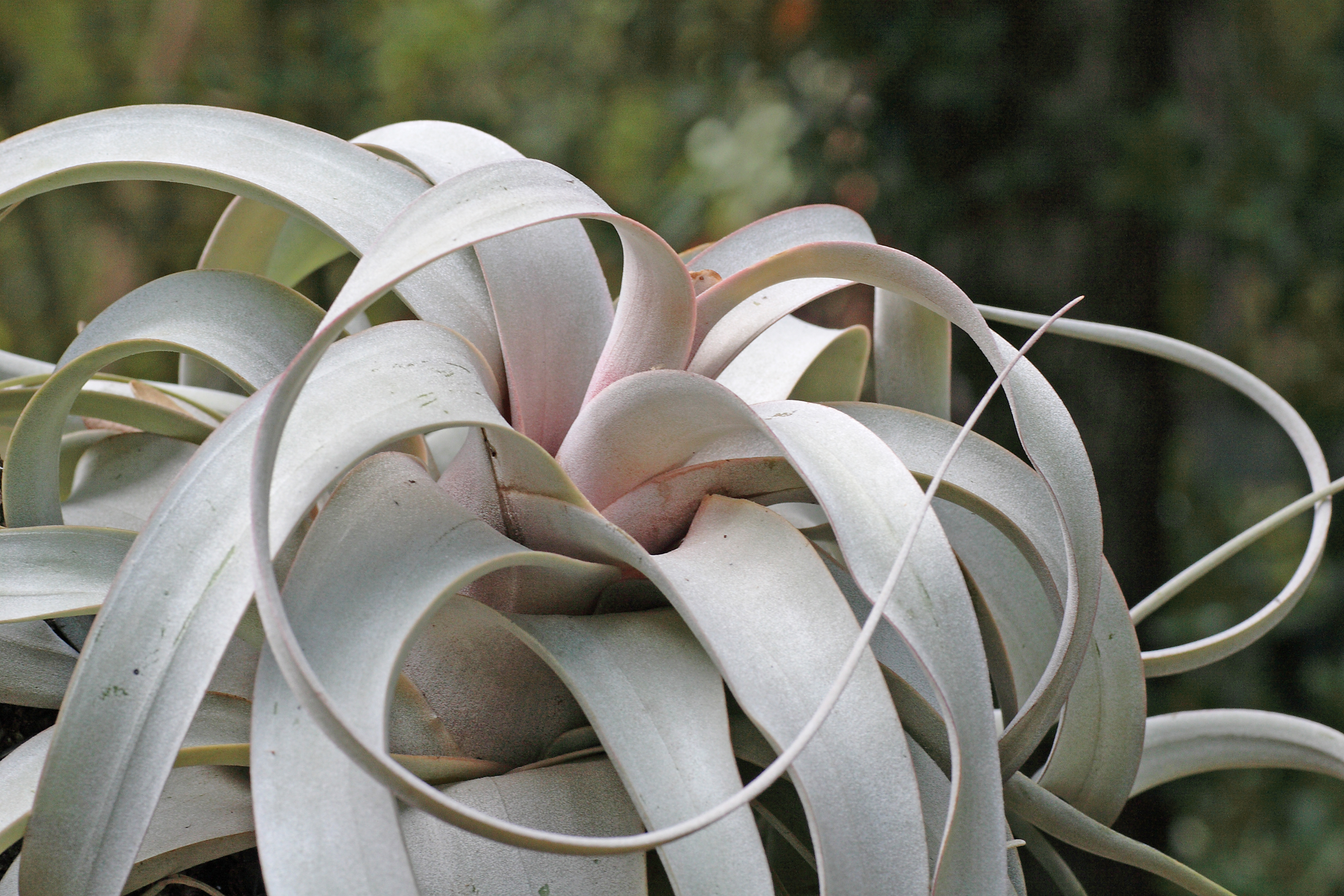Giant tillandsia
(Tillandsia xerographica)

Description
Tillandsia xerographica is a striking epiphytic plant that belongs to the Bromeliaceae family. It is a popular species in the genus Tillandsia, with a widespread reputation for its unique appearance and ease of care. Tillandsia xerographica is native to Central America, particularly in the dry forests of Mexico, Honduras, and El Salvador. The plant's unique features, coupled with its robustness, make it a popular choice for plant enthusiasts and interior designers. Taxonomy: Tillandsia xerographica belongs to the kingdom Plantae, phylum Tracheophyta, class Liliopsida, order Poales, family Bromeliaceae, subfamily Tillandsioideae, genus Tillandsia, and species Tillandsia xerographica. Physical Characteristics: Tillandsia xerographica is a slow-growing epiphyte with a rosette form that can reach a size of up to three feet (90 cm) in diameter. It is characterized by its thick, succulent leaves that grow in a spiral pattern, forming a spherical shape. The leaves are silver-grey and covered with trichomes, which are hair-like structures that help the plant absorb moisture and nutrients from the air. The plant produces a single inflorescence, which can grow up to three feet (90 cm) long, and is composed of pink, purple, or red bracts, which surround the small, tubular flowers. The flowers bloom from the bottom of the inflorescence to the top, with each individual flower lasting for several days. Habitat: Tillandsia xerographica is native to the arid regions of Central America, particularly in Mexico, Honduras, and El Salvador. The plant grows on trees, rocks, and other epiphytic surfaces, and can be found at elevations of up to 4,900 feet (1,500 meters) above sea level. The plant is adapted to survive in hot, dry conditions, and can tolerate periods of drought. Cultivation: Tillandsia xerographica is a popular plant for both indoor and outdoor cultivation. It is a low-maintenance plant that can be grown in a variety of conditions. The plant does not require soil and can be mounted on a variety of surfaces, including driftwood, rocks, or shells. Tillandsia xerographica prefers bright, indirect light and can be grown in a range of temperatures, from 50 to 90 degrees Fahrenheit (10 to 32 degrees Celsius). The plant is adapted to dry conditions and should be misted with water two to three times a week. Tillandsia xerographica is a slow-growing plant and does not require frequent fertilization. A diluted fertilizer solution can be applied once a month during the growing season to encourage growth and flowering. Propagation: Tillandsia xerographica can be propagated through offsets, which are small plantlets that grow from the base of the parent plant. To propagate the plant, the offset can be carefully removed from the parent plant using a sharp, sterile knife. The offset can be planted in a well-draining potting mix or mounted on a suitable surface. The newly propagated plant should be misted with water and placed in bright, indirect light. It can take several years for the new plant to reach maturity and produce its first inflorescence. Uses: Tillandsia xerographica is a popular plant for both indoor and outdoor decoration. Its unique appearance and low-maintenance requirements make it an ideal plant for use in terrariums, as well as in hanging planters and as a centerpiece in floral arrangements. The plant is also used in xeriscaping.
Taxonomic tree:







